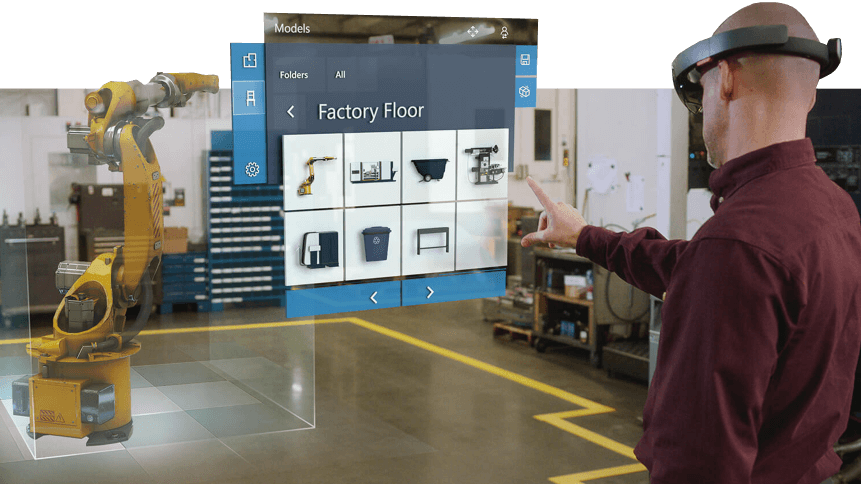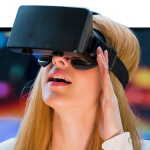Microsoft targets enterprises with AR app platform

Microsoft has taken a bold step into the world of mixed reality, launching a new platform to power augmented reality apps targeted at cross-industry enterprise customers.
Unlike virtual reality (VR) which immerses users in a simulated environment, mixed reality allows users to see and interact with digital objects in the real world, often with as little hardware as a smartphone, or light, standalone headset.
According to the software giant, the launch of Visualize— part of the firm’s Dynamics 365 suite of business applications— stems from customer demand across businesses in manufacturing, automotive, sales, energy and more.
In these sectors, customers could use the powerful mixed reality software to present a custom designed car or demonstrate how a piece of machinery works on the inside.
One of the new mixed reality applications on Visualize is called Remote Assist. It allows technicians to use their smartphone or PC to remotely dial into a Microsoft Hololens headset to view what the wearer is seeing.
The remote viewer can overlay arrows or scribbles to call the worker’s attention to something.
For those firms who don’t necessarily want to fork out on a Hololens for all of their staff, Microsoft will roll out Remote Assist for Android phones, which will include mobile annotations, group calling, among other features— an iPhone version is also on the horizon.
Another feature, Product Visualize, allows retailers— particularly those in manufacturing, healthcare and automotive— to showcase or visualize their products. A car salesperson, for example, could overlay various color or trim options on to an existing car, allowing a customer to visualize their potential purchase.
“These are really designed to help sales, remote workers, and people doing retail or space planning to bring that digital environment in with how their organization operates,” Alysa Taylor, corporate vice president of Microsoft Business Applications and Global Industry, told Business Insider.
Microsoft has reportedly deployed the technology itself to plan and design flagship stores’ floor plans and analyze customers’ foot traffic, while early adopters include carmaker Toyota, which is using the technology to plan the outlay of the manufacturing floor and to create AR training programs. Energy firm Chevron, meanwhile, has used the app to survey oil rigs.
In launching Visualize, Microsoft hopes to compete with Google’s ARCore and Project Aero from Apple and Adobe, which are also aimed at using AR in business or consumer settings.
YOU MIGHT LIKE

Kellogg pilots VR eye-tracking in simulated stores
However, Taylor said that these competitors are aimed at both B2B and B2C use cases: “The difference that you’ll see from Apple and others is they’re very consumer-oriented, very socially oriented, whereas we are looking at it from a ‘How do we enable businesses to have different interaction touch points, as well as to be able to move their business forward and transform in different ways?’”
While AR (augmented reality) and VR technologies, and their mixed reality ilk, were previously thought to gain the most traction in the consumer gaming market, the technology is starting to see late-blooming success among businesses. Niko Eiden, the co-founder of VR headset maker Varjo, told CNBC recently, “The consumer market hasn’t yet picked up as it was anticipated […] On the professional side it’s the complete opposite.”
HTC Vive announced recently that it is launching a whole suite of “premium VR offerings for businesses of all sizes”. One of the tools they’ve launched is called the VIVE Sync aimed at facilitating virtual collaboration.
Tom Mainelli, Program Vice President, Devices and Augmented and Virtual Reality at International Data Corporation, said vendors of AR and VR technology are “looking to commercial” as a way to build businesses while consumers catch up.
“IDC expects commercial buyers to represent an increasingly important percentage of the market going forward,” he said.









